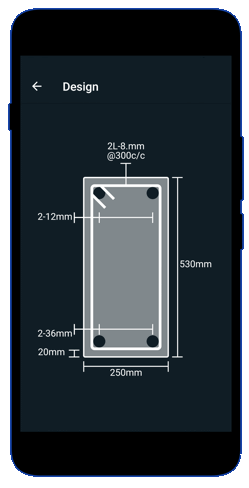When we start with the design of a structure. It is very important to consider the structures safety and serviceability. As per IS 456: 2000, the structure should be capable to resist all the different forces that comes over the complete life. The estimation of force is done by considering different load combination which is present in the Indian standard. As per limit state of collapse, one should consider a factor of safety for each material and loads.
The design strength of material is :
$$
f_{d}=\frac{f_{k}}{\gamma_{m}}
$$
Where, fd is the design strength of material .
fk is the characteristics strength.
and γm is the partial safety factor.
Partial safety factors for steel and concrete
As per the limit state of collapse, the partial safety factor of steel is 1.15 .
So the design stress for steel is :
$$
\frac{f_{y}}{\gamma_{m}} = \frac{f_{y}}{1.15} = 0.87 f_{y}
$$
For concrete the compressive strength of the material is 67 percentage of the characteristic strength of concrete in cube testing. As per IS 45:2000, the partial safety factor is 1.5 for concrete. So the design stress of concrete is :
$$
\frac{0.67 f_{ck}}{\gamma_{m}} = \frac{0.67 f_{ck}}{1.5} = 0.446 f_{ck }
$$
The partial safety factor for steel is less than that of concrete. As steel is manufactured under a control manner in steel plants. It will have a good quality check, than that of concrete.
Further, in case of concrete we compute the characteristic strength using the test results on 150 mm standard cubes. But the concrete in the structure has different sizes. To take the size effect into account, it is assumed that the concrete in the structure develops a strength of 0.67 times the characteristic strength of cubes.
Check this post to study about the limit state of serviceability.
Beam design
- RCC Beam Design is a free app for designing reinforced concrete beams as per Indian Standards.
- RCC Design and detailing could be performed by Limit State Method specified in IS456:2000
- Option to save the design projects in local storage.
- Detailed calculation steps presented for verification and validation.

The design procedure of singly RCC section as per IS 456: 2000 this post.